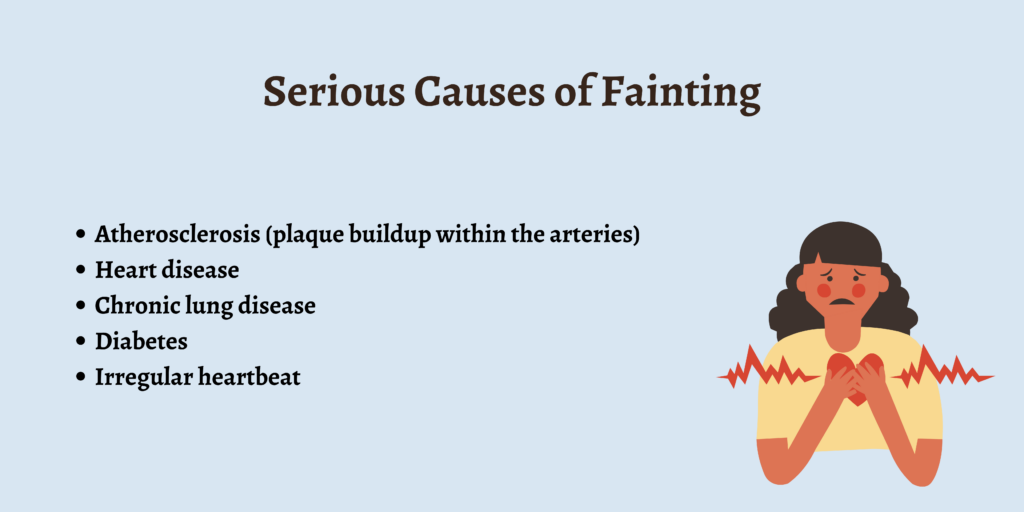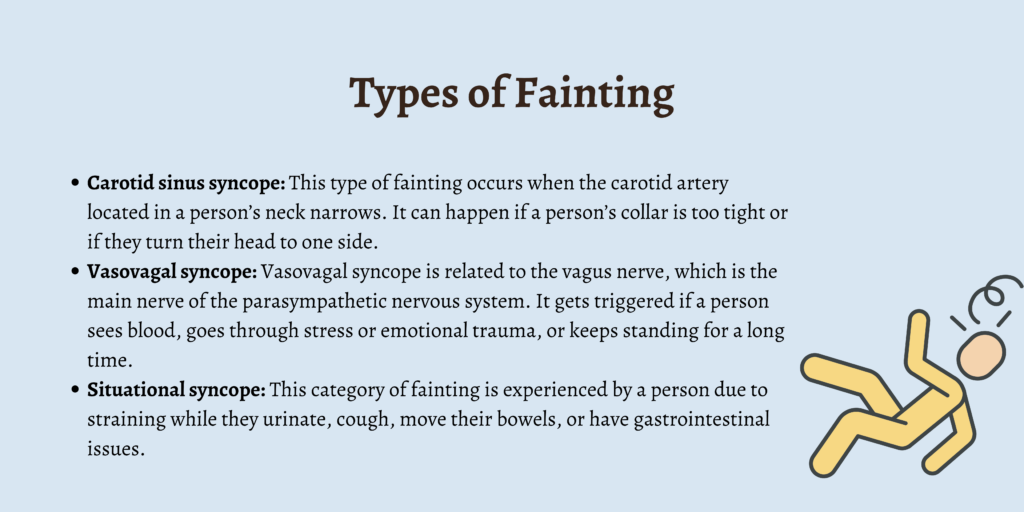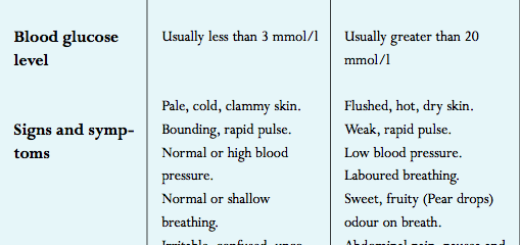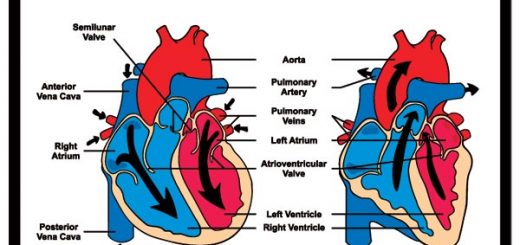What Causes Fainting?
Fainting is a short-term episode of unconsciousness that occurs due to decreased blood flow to the brain. The episode usually lasts for a couple of minutes or seconds, after which the person wakes up and feels normal.
Syncope is the medical term given to fainting, but it’s mostly referred to as ‘passing out.’ Before a person faints, they could feel nauseous, weak, dizzy, or lightheaded. Some people become aware that something is about to happen before they faint, such as the sounds around them fading away.
In case there isn’t an underlying medical condition that causes a person to faint, they won’t require any medical treatment for it. However, if a person doesn’t recover soon after fainting, contact the emergency medical services.
In this article, we will be discussing the causes of fainting, the types of fainting, and the treatment and complications associated with fainting.
Serious Causes of Fainting
The serious causes of fainting are:
- Atherosclerosis (plaque buildup within the arteries)
- Heart disease
- Chronic lung disease
- Diabetes
- Irregular heartbeat
Minor Causes of Fainting
The minor causes of fainting are as follows:
- Overheating or dehydration
- Panic or anxiety attacks
- Seizures
- Hyperventilation
- Serious pain
- Low blood sugar
- Standing up too quickly
- Consuming alcohol or drugs
- Coughing too hard
- Medicines used to treat high blood pressure
- Prolonged standing
- Emotional distress or trauma
- Not eating well
Types of Fainting
The following are the common types of fainting:
- Carotid sinus syncope: This type of fainting occurs when the carotid artery located in a person’s neck narrows. It can happen if a person’s collar is too tight or if they turn their head to one side.
- Vasovagal syncope: Vasovagal syncope is related to the vagus nerve, which is the main nerve of the parasympathetic nervous system. It gets triggered if a person sees blood, goes through stress or emotional trauma, or keeps standing for a long time.
- Situational syncope: This category of fainting is experienced by a person due to straining while they urinate, cough, move their bowels, or have gastrointestinal issues.
First Aid For Fainting
First aid for fainting involves:
- Ensuring that the person’s airway is clear.
- Checking if the person is breathing or not.
- Checking their heartbeat.
- Seeking immediate medical help if the person is hurt.
- Performing CPR in case the person does not have a pulse or is not breathing.
- Getting an automated external defibrillator (AED) if required.
When a person wakes up from a fainting spell, do the following:
- Ask them to lie down or sit for about 10 to 15 minutes.
- Check if they have any injuries.
- Offer them cold water.
- Encourage them to sit forward and keep their head below their knees and shoulders.
How is Fainting Treated?
The treatment provided by a doctor for fainting depends on the cause behind it. Older people or individuals who are over the age of 65 often faint if they stand up too quickly. The treatment given in such cases includes:
- Medicines
- Leg exercises
- More fluids
- Compression stockings
If the reason behind a person’s fainting is related to heart issues, the suggested treatment could include the following:
- Medication
- Heart valve replacement
- Implantable cardioverter defibrillator (ICD)
- Pacemaker
- Catheter ablation
Pacemaker and medicines are often the treatment suggested for those who have carotid sinus syncope.
Complications or Risks of Not Treating Fainting
A person can faint frequently if there are underlying medical conditions that are left untreated. Orthostatic hypotension refers to a condition wherein a person faces a sudden drop in blood pressure when suddenly they stand up after lying down or from a seated position.
Cardiac syncope could signify the presence of a heart issue that’s lethal. It could also signal an abnormal heart rhythm or a problem related to a part of a person’s heart.
If this condition is not untreated, people with cardiac syncope face double the risk of being in a car accident as the rest of the population.
When Should Fainting be Treated by a Healthcare Provider?
One does not need to contact a healthcare provider if they faint just once and are otherwise in a healthy condition. Do reach out to a doctor if:
- You have been fainting quite frequently.
- You face an injury after fainting.
- You take longer to become conscious post-fainting.
- You faint while engaging in exercise.
Although fainting is not considered a life-threatening medical issue, you should alert your doctor if you face the following symptoms:
- Shortness of breath
- Irregular heartbeat
- Blurry vision
- Having no control while pooping or peeing
- Chest pain
- Having trouble talking
- Being confused
An occurrence of fainting should be reported to a doctor if the person:
- Is pregnant
- Has a family history of sudden death
- Has diabetes
- Has an issue with blood pressure
- Has heart problems
FAQs
1. Why does a Person Faint?
A person faints due to decreased blood flow to the brain.
2. What are the minor causes of fainting?
The minor causes of fainting are feeling too hot, being very upset, standing up too quickly, and not drinking or eating enough.
3. What are the serious causes of fainting?
The serious causes of fainting include blood vessel or heart problems, vasovagal syncope, and chronic lung disease.
4. When does one need to see a doctor with Regard to Fainting?
One needs to see a doctor with regard to fainting if they faint too often, have an injury from fainting, and have chest pain or blurry vision.
5. How is Fainting Treated?
The treatment for fainting involves determining the cause behind it. When older people faint, the treatment given to them involves leg exercises, medications, and more fluids.
Conclusion
If you’re aware of the symptoms you feel right before fainting, then there are a couple of things you can try to prevent it from happening, such as:
- Lie down.
- Cross your legs.
- Sit and lean forward and then put your head between your knees.
- Make a fist with your hand.
- Bring your thighs together and squeeze them in.
Fainting happens when there is a drop in blood pressure which thereby reduces the flow of blood and oxygen to the brain. Most of the time, fainting is not something to worry about.
However, if you’ve been fainting too often, it’s necessary to get in touch with a doctor to determine if there are any underlying causes behind it so as to prevent this from happening too frequently.







